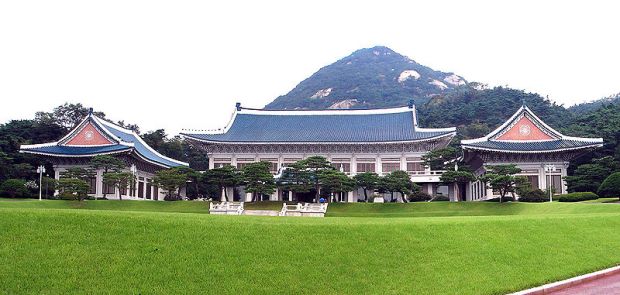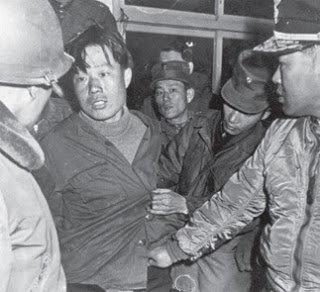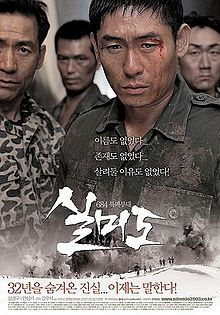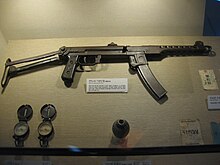TS
kolonel.bejo
(The Blue House Raid)North Korea’s Failed 1968 Commando Assault on Seoul

In 1968, a team of 31 elite North Korean commandos infiltrated the south. Their target: the president of the Republic of Korea. Photo courtesy the Korean Central News Agency.
Four South Korean brothers got more than they bargained for while out searching for firewood one chilly afternoon in January of 1968. As the siblings foraged for kindling on a wooded mountainside some 50 km north of Seoul, the young men accidentally stumbled into the hidden base camp of an entire platoon of North Korean commandos.
Sentries guarding the site’s perimeter quickly fell upon the hapless visitors and brought them at gunpoint to their commander.
To the officer in charge of the 31-man team, these sudden and unexpected guests threatened undermine the group’s top secret mission, one that had been planned for two full years on the personal orders of none other than the communist dictator Kim Il-Sung.
UNIT 124
Known as Unit 124, the hand-picked commandos had slipped across the demilitarized zone separating the two Koreas just three days earlier bypassing U.S. Army sentries along the way.
Once inside enemy territory, the infiltrators traversed the Imjin River and stealthily made their way through the rugged mountains towards the capital of Seoul. The group’s objective was to storm the South Korean executive mansion and assassinate President Park Chung-hee.
The men chosen for the task were reputed to be among the best the totalitarian regime had to offer. All had been rigorously trained to survive in hostile country. All were masters of combat with small arms and knives as well as their bare hands. And all were fanatically loyal to the “Great Leader”. One Unit 124 veteran remembered how as part of their training recruits were expected to sprint miles over rough terrain in sub-zero temperatures while hauling 60 lbs. of gear. To toughen them up further, members were sometimes made to sleep on top of corpses. “It made us fearless,” he recalled.

South Korea’s presidential palace, known as the Blue House, was the scene of a desperate gun battle on Jan. 21, 1968.
FATAL ERROR
Amazingly, instead of ruthlessly disposing of their four civilian captives, the officer leading the platoon arrived at a bewildering decision: the prisoners would be persuaded of the virtues of communism and then released. Predictably, after an ad hoc field indoctrination lecture, the brothers declared themselves converted, thanked their new-found comrades for their hospitality and immediately made for the nearest police station to report the bizarre encounter.
South Korean and U.S. forces went on alert and within hours, troops and police fanned out across the region in search of the invaders.
BATTLE OF THE BLUE HOUSE
For two days, the men of Unit 124 evaded all pursuers and continued on towards their objective. On the evening of Jan. 21, they reached the outskirts of the capital. After donning South Korean army uniforms, the platoon entered the grounds of the palace. Posing as a security detail, the infiltrators passed through a series of security posts, but as they closed to within 100 yards of the target, an alert sentry challenged them. Without warning, the invaders opened fire. Palace guards and police returned the fusillade and within minutes, Unit 124 had been decimated. Outnumbered, outgunned, and having lost the initiative, the commandos scattered and made for the safety of the north. Government troops pursued the fleeing raiders through the streets of Seoul. A running gun battle ensued. Before the night was over, 92 South Koreans were casualties, among them nearly two-dozen civilians who were on a bus that was trapped in a crossfire. For its part, Unit 124 suffered grievous losses. Most of its members were mowed down in the opening minutes of the assault or in the shoot out that followed and at least one evaded capture by killing himself.

North Korean commando Kim Shin-Jo at the moment of his capture in 1968.
AFTERMATH
With the capital finally secure, South Korean and U.S. Army units rushed into the mountains north of the city to cut off the remaining raiders’ escape. Over the next 72 hours, the remnants of Unit 124 were hunted down and killed. Four American GIs also died in the clashes. By the end, 29 of the 31-man commando team were dead; one survivor managed to slip back across the border while the other was taken prisoner.
The Blue House Raid marked a low point in a period of worsening relations between the two Koreas. However, the deadly attack would be overshadowed by yet another crisis: the USS Pueblo incident, which took place only two days later.
The only member of Unit 124 to be taken alive was a 27-year-old commando named Kim Shin-Jo. After months of brutal interrogations, Shin-Jo’s was befriended by some of his captors. He soon defected to the south and in 1970 was offered full citizenship. Today he works as a church pastor in Seoul. He is 72.
“I tried to kill the president. I was the enemy,” he told CNN in a 2010 interview. “But the South Korean people showed me sympathy and forgiveness. I was touched and moved.”
RETRIBUTION
South Korea’s president felt no such goodwill for the regime in Pyongyang following the attempt on his life. Shortly after the attack, he ordered his armed forces to retaliate in kind. Accordingly, the Korean Central Intelligence Agency (KCIA) organized its own assassination squad to carry out a strike on the communist leader Kim Il Sung. The team, which like the north’s Unit 124 was also made up of 31 members, was dubbed Unit 684. strangely, recruits were not the military’s elite. Instead, mission planners combed the nation’s prisons for hardened criminals. The convicts signed on to the risky mission in exchange for pardons. All were subjected to rigorous drilling on an uninhabited island off South Korea’s west coast — so rigorous in fact, seven of the volunteers perished during the training. It would all be for nothing.

Silmido was a box office smash in South Korea.
Seoul’s convict commandos never would see action in North Korea. Their mission was scrubbed amid a period of improving relations between Seoul and Pyongyang. But that wasn’t the end of the story. In August of 1971, Unit 684 mutinied, murdered their handlers and escaped from their island training ground. After making their way to Seoul, the two-dozen fugitives hijacked a civilian bus, but were intercepted by South Korean army units inside the capital. All but four of the group were killed in the ensuing firefight. The survivors were tried by military courts and sentenced to death in 1972. Afterwards, the government in Seoul covered up the entire debacle, but details emerged in the 1990s. In fact, Unit 684’s story became the subject of a highly successful 2003 film entitled Silmido (named after the island where the group was trained). Families of the team-members eventually sued the state for compensation. In 2010, the courts ordered the Seoul to pay nearly $300 million in damages to the relatives of unit members.

PPS-43, compasses, grenade and fake ID from the Ulchin-Samcheok Landings at the War Memorial of Korea
http://militaryhistorynow.com/2013/0...ault-on-seoul/
0
4.5K
4
Thread Digembok
Urutan
Terbaru
Terlama
Thread Digembok
Komunitas Pilihan